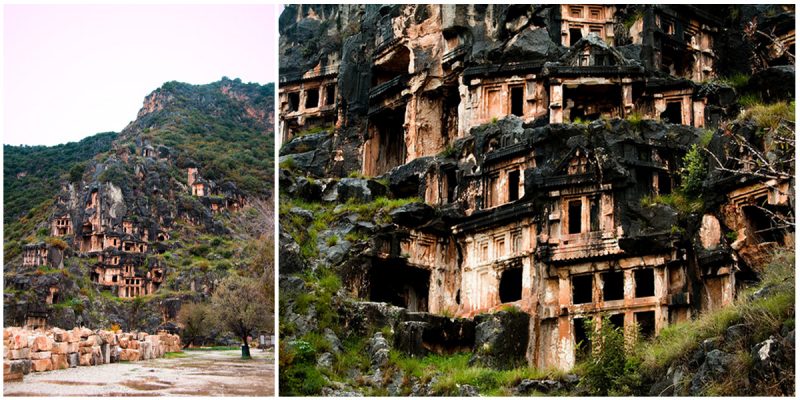Myra was an ancient leading city in Lycia where the small town of Kale (Demre) is situated today, in present day Antalya Province of Turkey. It was located on the river Myros (Demre Çay), in the fertile alluvial plain between Alaca Dağ, the Massikytos range, and the Aegean Sea.
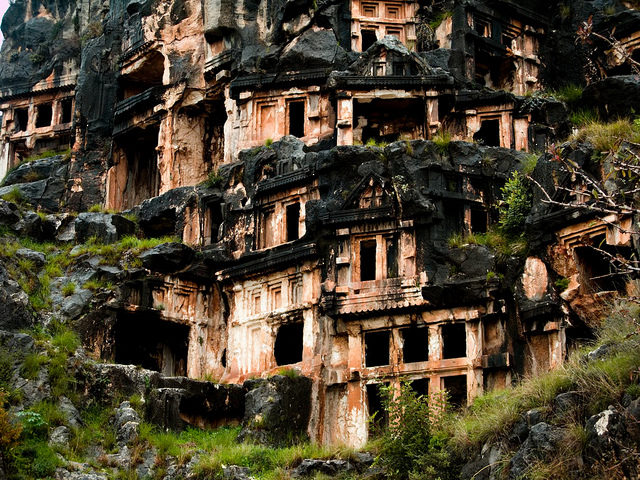
The main attractions at Myra are the large theatre which used to sit 13000 and the necropolis Lycian rock tombs. The tombs were always placed at the top of hills or on the cliffs as there was a belief that the dead would be transported to another world by a wing liked creature.
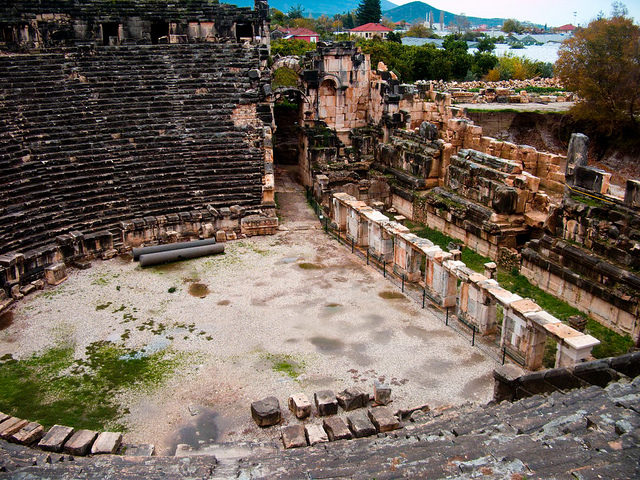
There are two necropoleis of Lycian rock-cut tombs in the form of temple fronts carved into the vertical faces of cliffs at Myra: the river necropolis and the ocean necropolis. The ocean necropolis is just northwest of the theater. The best-known tomb in the river necropolis (located 1.5 km up the Demre Cayi from the theater) is the “Lion’s tomb,”also called the “Painted Tomb.” When the traveller Charles Fellows saw the tombs in 1840 he found them still colorfully painted red, yellow and blue. Andriake was the harbour of Myra in classical times, but silted up later on. The main structure there surviving to the present day is a granary (horrea) built during the reign of the Roman emperor Hadrian (117–138 CE).
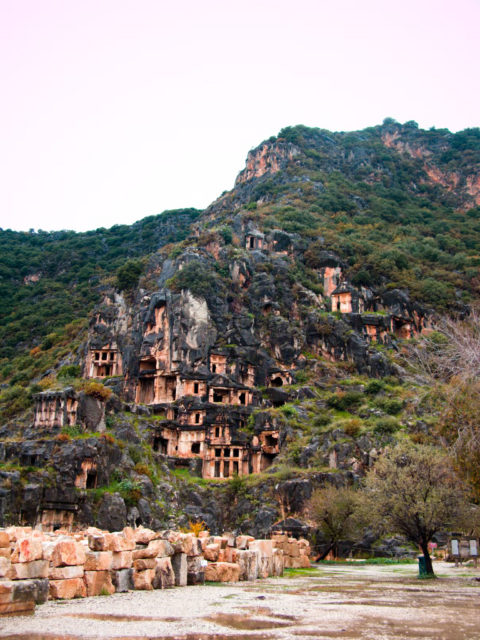
Excavations have been carried out at Andriake since 2009. The granary was turned into the Museum of Lycian Civilizations. Myra is today listed by the Catholic Church as a titular see both in general and as a bishopric of the Melkite Catholic Church in particular. While Latin bishops are no longer appointed to this Eastern titular see, Melkite bishops are.
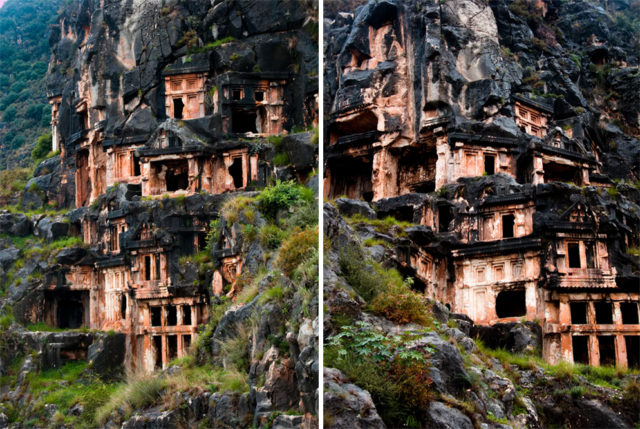
Early Greek citizens worshipped Artemis, but by the 4th century AD, Nicholas of Myra served as the town’s bishop. Venerated as St Nicholas, his reputation for secret gift-giving made him the model for Santa Claus. The 8th-century church of St. Nicholas is currently undergoing restoration, while the rock-cut tombs and other ruins are popular tourist attractions.
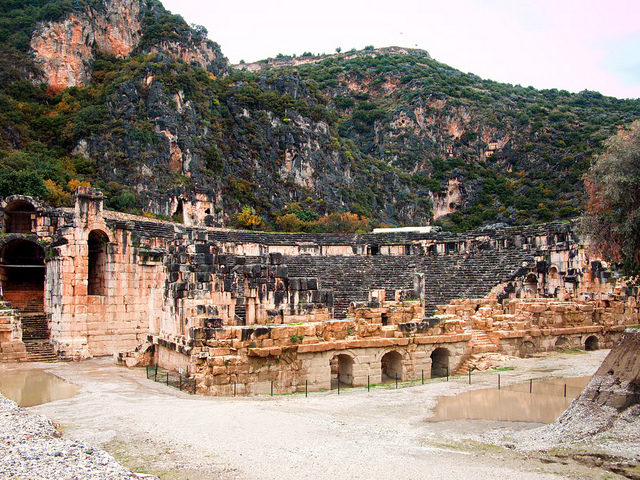
Photos: Caleb Maclennan/Flickr
